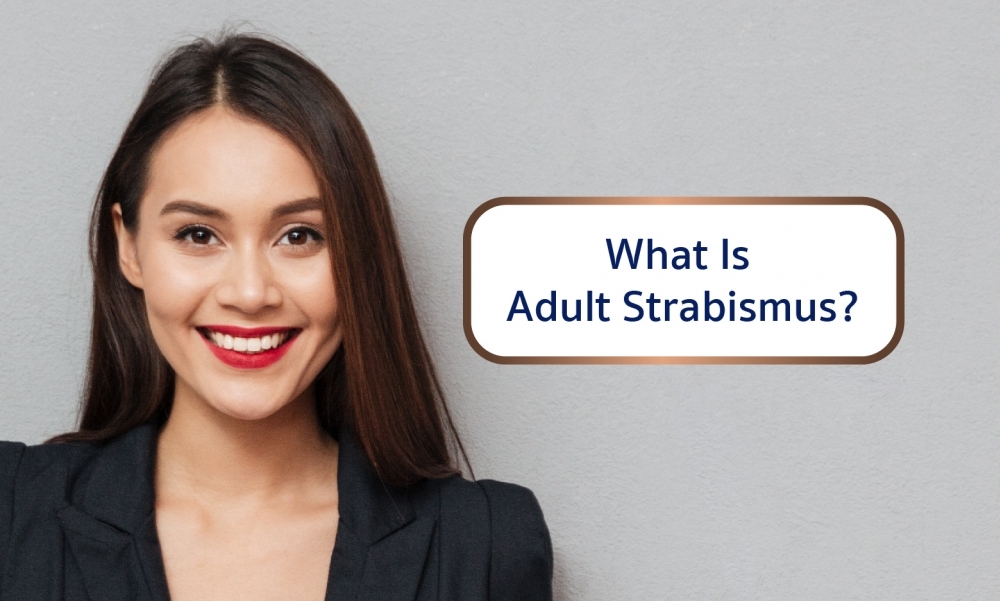Strabismus is when your eyes are not lined up properly and they point in different directions. One eye may look straight ahead while the other eye turns in, out, up, or down. The misalignment can shift from one eye to the other.
Strabismus affects vision, since both eyes must aim at the same spot together to see properly.
There are six eye muscles that control eye movement
One muscle moves the eye to the right, and one muscle moves the eye to the left. The other four muscles move the eye up, down, and at an angle. In order to focus on a single image, all six eye muscles must work together.
What causes adult strabismus?
To line up and focus both eyes on a single target, all muscles in both eyes must be balanced and working together. The brain controls these muscles. People who have strabismus usually have a problem that can affect eye muscles. Some of those problems may include:
Health problems such as diabetes, thyroid disease (Graves’ disease), Myasthenia gravis, brain tumors, or a stroke
Accidents or head injury
Accidents or head injury
Damage to eye muscles during some kind of eye surgery
Most adults with strabismus have had it since they were children. But sometimes it starts later in life.
How does adult strabismus affect vision?
With normal vision, both eyes aim at the same spot. The brain combines the two images from our eyes into a single, three-dimensional (3-D) image. This is how we can tell how near or far something is from us (called depth perception).
When one eye is out of alignment, two different pictures are sent to the brain. In a young child, the brain learns to ignore the image of the misaligned eye. Instead, it sees only the image from the straight or better-seeing eye. As a result, the child loses depth perception.
Adults who develop strabismus after childhood often have double vision. This is because their brains have already learned to receive images from both eyes. Their brains cannot ignore the image from the turned eye, so they see two images.
What are adult strabismus symptoms?
The most obvious symptom is having eyes that appear out of alignment. Adults with strabismus also may notice these other symptoms:
Weakness in or around the eye, or feeling like something is pulling around your eyes.
Vision changes, such as double vision (seeing two of one image), blurry vision, trouble reading, or a loss of depth perception.
Constantly tilting or turning your head to see an image clearly.
Strabismus symptoms can be constant, or they can come and go.
Information from American Academy of Ophthalmology
 02-056-3333
02-056-3333





